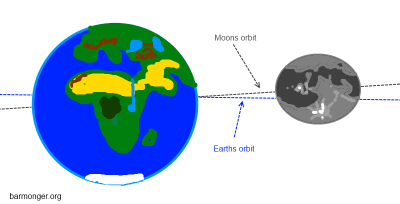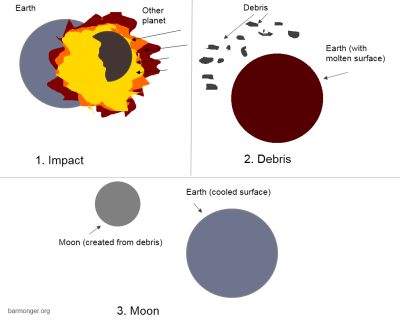And here it is; the Moon trivia.
Distance and size
The distance to the Moon is roughly 380000 km (+/- 25000 depending on where it is in its elliptical orbit). At apogee (where it's farthest away) the distance is around 405000 km and at perigee (where it's closest) the distance is around 365000 km.
The radius of the Moon is about 1737 km (the Earth's radius is 6371 km) with an equatorial circumference of almost 11000 km (the Earth's circumference is about 40000 km).
The Moon is about 50 times smaller than the Earth in volume.
Orbit
The orbit of the Moon around the Earth is tilted slightly (5.14°) in respect to Earth's orbit around the Sun.
The Moon orbits the Earth every 27.3 days (sidereal orbit) but it takes 29.5 days for the Moon to appear in the same place in respect to the Earth (synodic orbit).
Origin and geography
The Moon was created roughly 4.5 billion years ago, probably around 30-50 million years after the Earth and the rest of the solar system.
The reason it was created later is that the Moon was created when the Earth collided with another Mars-sized planet. The debris caused by this massive impact went into orbit around the Earth and eventually formed the Moon.
The impact completely destroyed the smaller body and its core fused with the Earth's core. This theory is called 'The Big Splash' or the 'Giant impact hypothesis'.
Other theories about the Moon's creation exist, but this is the most widely accepted theory.
Because the Moon lacks an atmosphere and plate tectonics, the surface erode very slowly and the craters on the surface last billions of years. The dark patches on the Moon are volcanic material created by ancient meteor impacts (which has since cooled down). The areas are called Maria (singular Mare), which is Latin for "sea", as that is what they appeared to be in early astronomy (when observing the Moon).
If you want more trivia there are a lot more on wikipedia.




0 comments:
Post a Comment